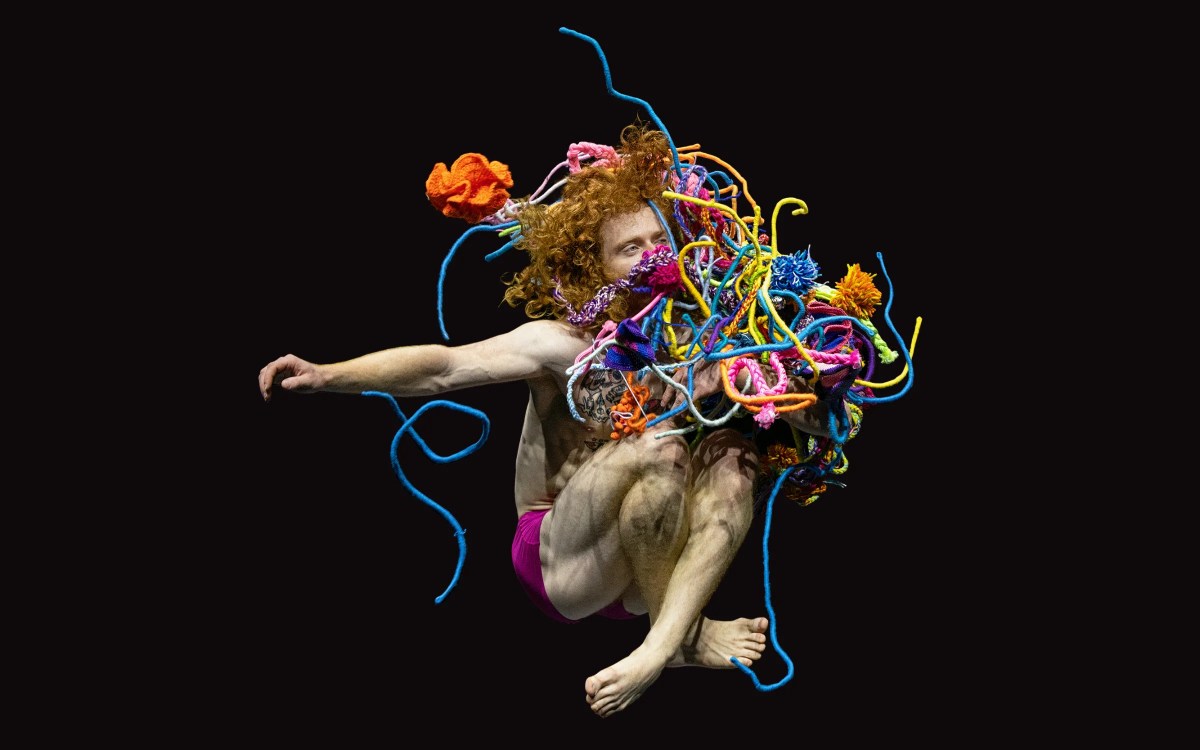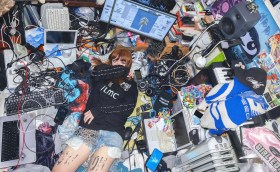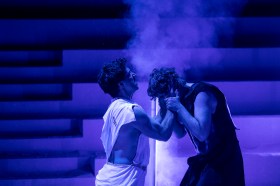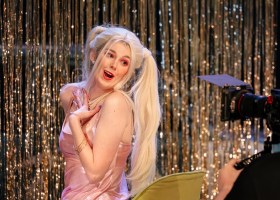Like many of Dancenorth’s productions, Wayfinder is a refreshing addition to Melbourne’s contemporary dance landscape – playful without losing its power and energising without being overwhelming. Under the Direction of Amber Haines and Kyle Page, the work showcases music from Hiatus Kaiyote, sound art and design from Byron J. Scullin, lighting design from Niklas Pajanti, sound sculpture design from Robert Larsen and Nicholas Roux, and visual design from Hiromi Tango.
Tango continues her use of colour seen through Rainbow Dream Moon Rainbow (Dark Mofo, 2022) and Wheel (Science Gallery Melbourne) to uplift and bring people together in Wayfinder – with striking impact.
Dancers utilise bright braided ropes throughout the show for a range of effects, from wild party montages to soft, intimate moments of connection. While heavily-relied upon props are often gimmicky add-ons, here they are intrinsically linked to the movement and progression of the work, and morph through varied and well-considered uses.
In a particularly powerful moment, six individually coloured ropes are laid across the stage like guitar strings and whipped through the space, shifting into hypnotising strands of coloured electricity with a singular dancer at one end and the rest of the collective at the other.
Costumes are equally vibrant but simple, with each dancer dressed in a tracksuit set with hues from across the colour spectrum.
Hiatus Kaiyote’s music is difficult to pin down. The Australian band has consistently bent the rules of genre back from their first album Tawk Tomahawk in 2012 to their latest release, Love Heart Cheat Code earlier this year. Drawing from neo-soul, jazz and psychedelia, their music should be impossible to translate into movement, but Wayfinder is intricate and wild, embodying Hiatus Kaiyote’s kaleidoscopic beats and melodies.
Most of the stage is taken up by an inflatable mat, enabling dancers to mirror the seemingly suspended moments in some of Hiatus Kaiyote’s tracks (for example, ‘Shaolin Monk Motherfunk’), but the dancers are not restricted by it, moving fluidly between the mat and stage.
At moments, though rarely, the bounce from the mat left dancers slightly off the beat on Melbourne’s opening night.
Set design and visuals continuously evolve. An additional mat is brought out to resemble a wall upstage for one of the most striking uses of the space throughout the show. What starts as dancers slowly climbing over the ‘wall’ shifts to an exuberant celebration of movement and connection, with dancers draped over, across or on top of the mat held above others’ heads.
The scene evolves into an unexpected costume change to silk rainbow robes and triggering a trippy, intoxicating euphoria.
Sound from Larsen and Roux works in harmony with Pajanti’s lighting design, playing with how music and light can fill a space. Throughout the show, orb-like lights with speakers (strategically placed across the theatre) light up, with unique sounds coming from each. When one orb becomes a focal point for the dancers on stage, it feels like light and sound connects the dancers to each other and the audience to them.
Read: Musical review: Dear Evan Hansen, Roslyn Packer Theatre
While there are significant solos throughout, Wayfinder is not a piece that can have a single standout. What is perhaps most remarkable about the production is that each dancer showcases extraordinary talent and individuality, but come together seamlessly as a collective.
Wayfinder was performed at Alexander Theatre, Monash University Performing Arts Centres on 18-19 October, and will play at the Geelong Arts Centre on 25-26 October 2024 as part of Melbourne Fringe Festival.
Read: ArtsHub‘s earlier review of the production in Perth Festival.






